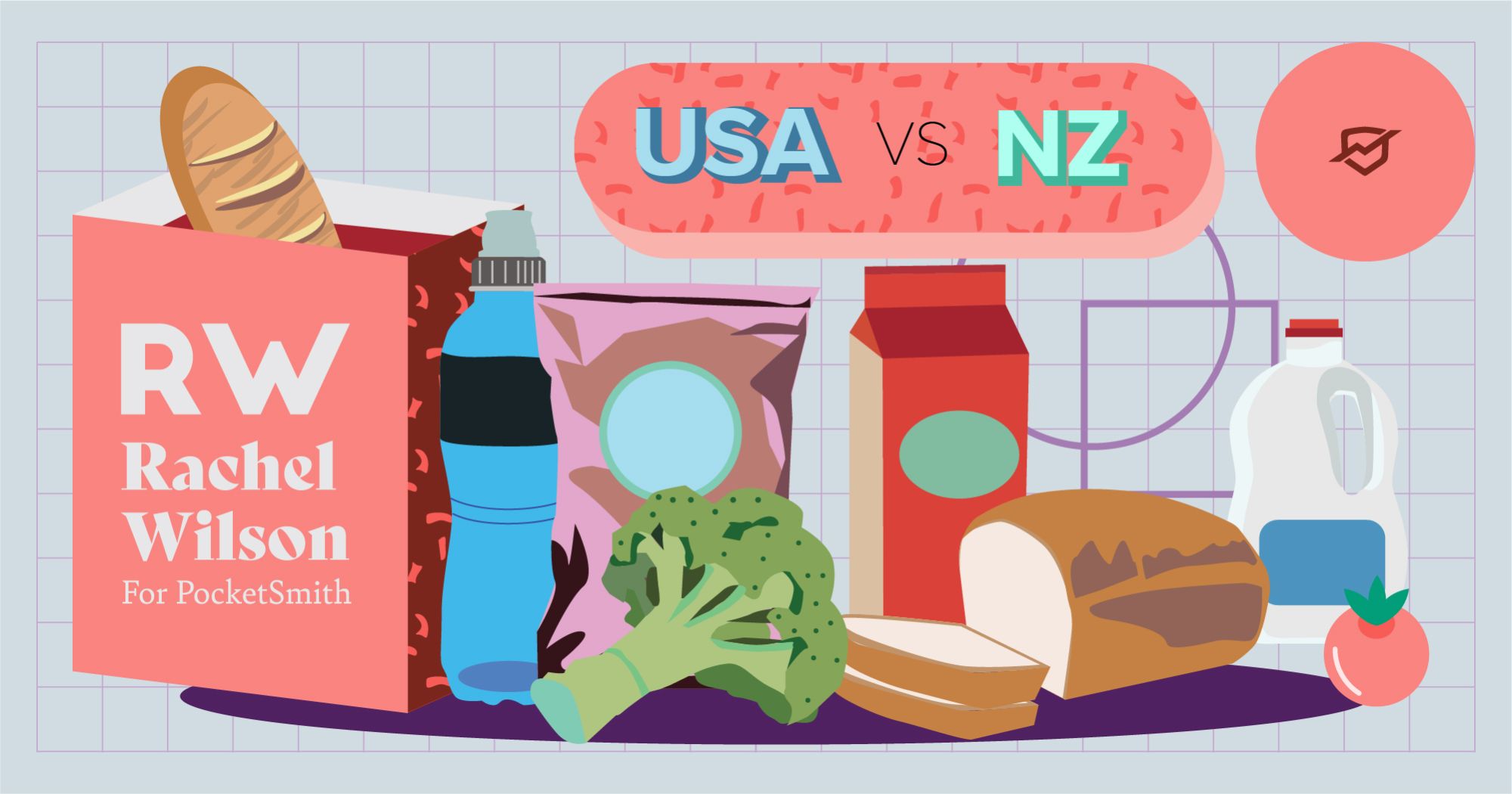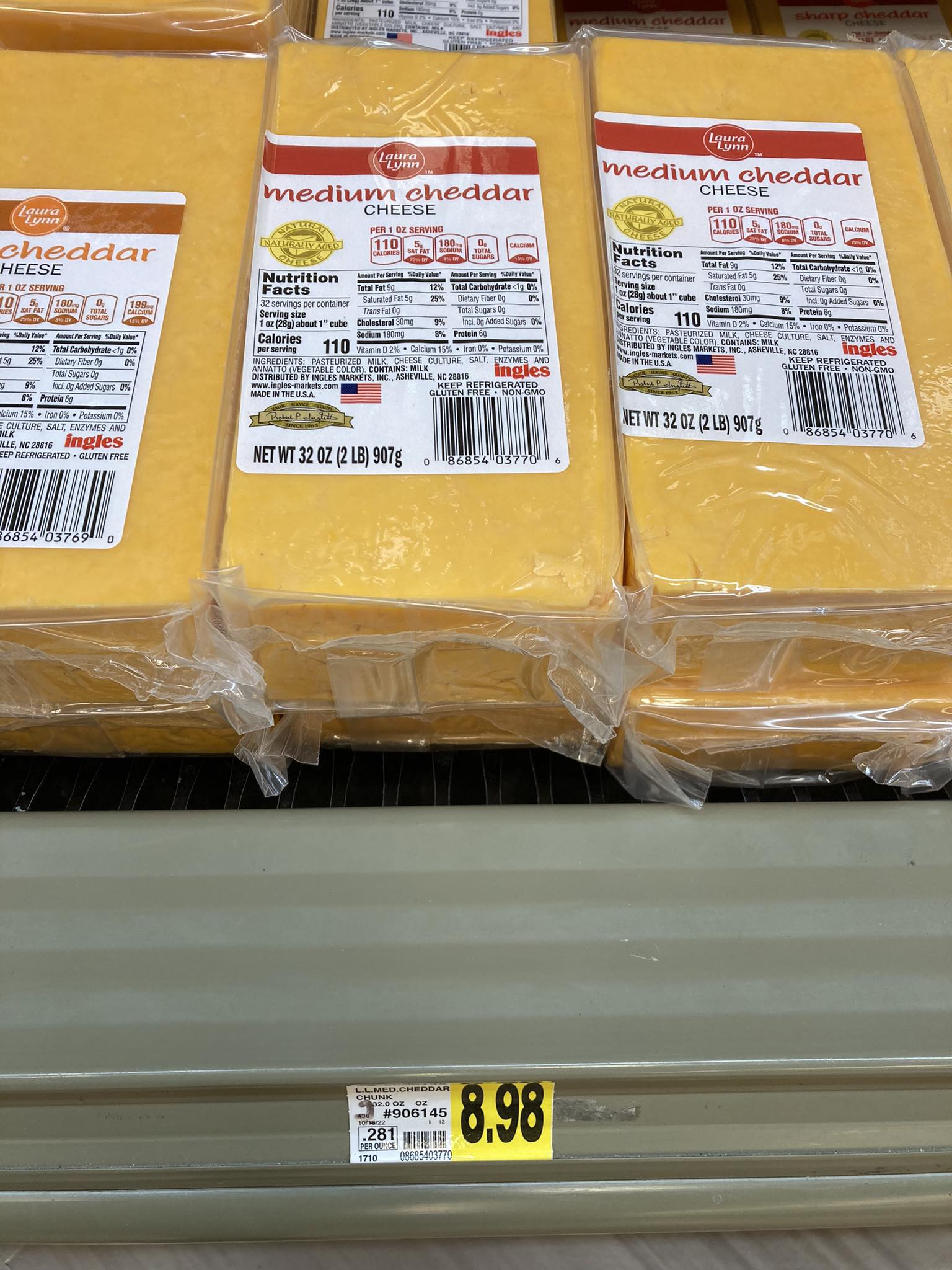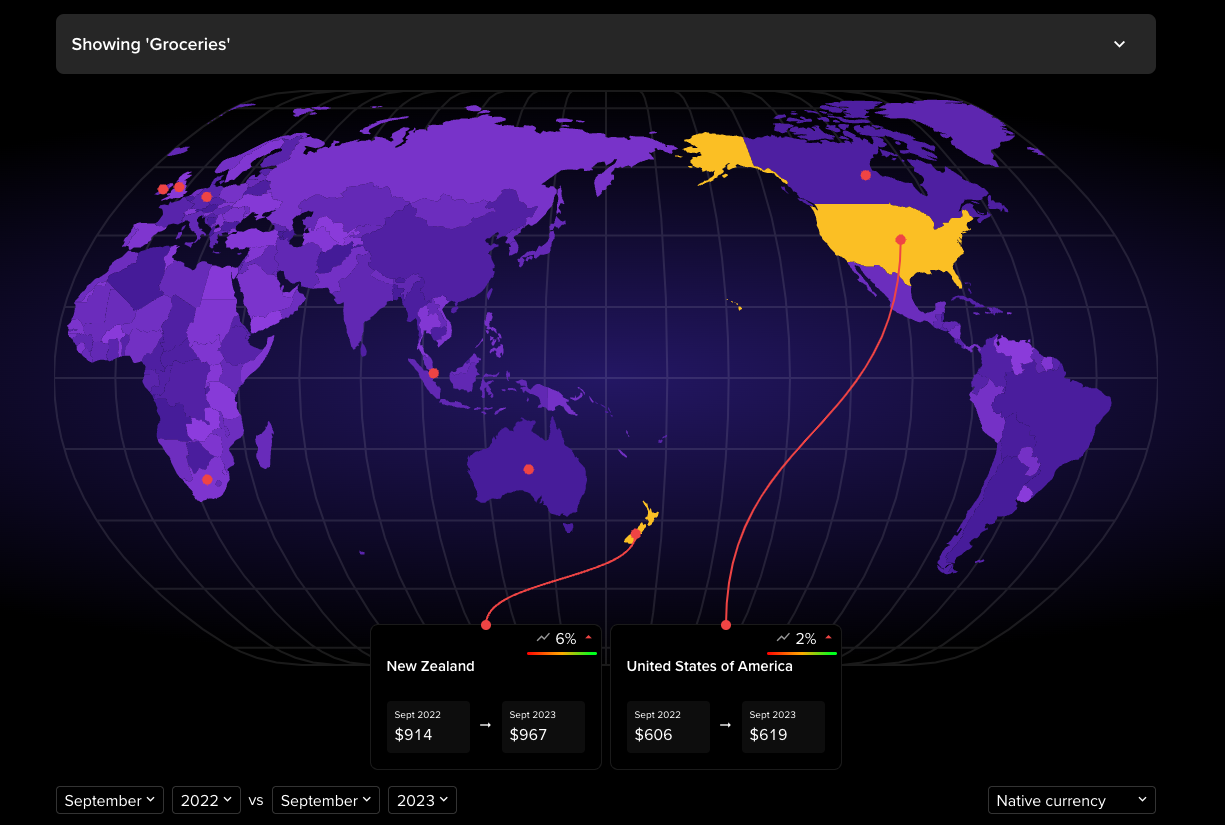
Nothing special, right? A perfectly normal thing for any Kiwi to do in the age of rising food prices. I was standing in the dairy aisle of a supermarket. To appearances, it was a normal block of cheese. Not a luxury brand or anything. Just ordinary cheddar cheese. A standard 1kg / 32oz block.
Except the supermarket was an Ingles, not a Woolworths or Pak N Save. The brand was Laura Lynn, not Pams or Mainland. I was in Georgia (GA), USA… and my mum was in New Zealand.
The cheese was US$8.98. Plus tax.

“That’s cheaper than our $14 blocks!” my mum replied. “What does it convert to?”
In general, I try to avoid converting prices into NZD when I’m traveling. Que sera sera — prices will be what they will be. It’s enough to compare cheap local options with expensive local options; why worry about comparing prices thousands of kilometers away and totally out of reach as well?
On the other hand, it can be a fun exercise, and it’s always good to have a ballpark figure.
Anything for you, Mum.
A US$8.98 block of cheese, it turns out, is NZ$15. That’s pretty comparable to anything on the shelves at Pak N Save back in NZ.
Based on past trips to the USA, a quick look at prices on the shelves around me, and the ever-escalating cost of living back home in NZ, I thought for sure that USA cheese would be a few dollars cheaper than NZ cheese.
(“It is,” my GA friend said later. “Ingles is pricey. There’s a reason I do my normal grocery shop at Walmart.”)
Hmm.
At Ingles, 28oz / 880ml Powerade was on special at 5 for US$5 — ridiculously cheap compared to Pak N Save, where 25oz / 750ml bottles cost NZ$2.79 each.
A box of Nature Valley protein bars? US$4.98 at Ingles, or NZ$5.75 at Pak N Save.
Bagels? Two for US$2 at Ingles, fresh-baked and enormous, or NZ$5.19 for a four-pack at Pak N Save.

And that’s not starting on the low prices and convenience factor of plentiful, easily accessible fast food in the USA. (Chik-Fil-A, I love you… on a ‘sometimes’ basis.)
I don’t know about you, but they’re making me hungry. Let’s move on to PocketSmith’s Global Spending Map, where we get a bigger window and a wider view of global prices. I’ll stick with the USA for consistency’s sake.
The Global Snapshot draws aggregate data from PocketSmith’s own users — worldwide — to give us a bunch of handy-dandy spendy data. For example:
If I compare the average cost of groceries between New Zealand and the USA, leaving both in their native currencies, we see the following:

I spent two weeks in the deep south of the USA, and I can definitely believe the difference in prices. As a single person in New Zealand, I was budgeting $200-$250/month for groceries. A family of four could easily spend $1000/month, even with careful budgeting and no luxury items. My GA friend, on the other hand, would spend far less than that and get far more food for her money.
I’m interested to see what the Snapshot has to say about this. How much do hundreds of fellow PocketSmithers spend on their transport costs on a monthly basis, and what does it average out to?
Admission of bias: My view on this is skewed. In New Zealand, I lived in a very walkable town and hadn’t owned a car in years. By contrast, my GA friend lives in a town without public transport infrastructure and has a 40-minute commute to work. Years ago, we had a lengthy conversation about gas prices, ending with the conclusion:
“If the American has $20 and the Kiwi has $20, which one of us can afford to fill our petrol tank?”
(Spoiler alert, it wasn’t the Kiwi.)
The range of categories offered by the Snapshot is immense. To put it another way, the scale at which PocketSmithers track their finances, from the big-picture overview to the tiniest detail, is jaw-droppingly impressive. Personal finance is personal, and a big part of that is the way we categorize our money spends. It has a way of showing what is really important to us.
There are the big-ticket categories. Housing. Utilities. Transport.
The mid-size categories. Charity. Education. Subscriptions.
The smaller, more detailed, far more personal, categories. Netflix. Coffee. Alcohol. Books.
We could be here all day digging into the differences between everyday costs in New Zealand and the USA. And that’s only two countries! What about Germany? Canada? Australia? France? Singapore? The United Kingdom? The options are endless.
The Global Snapshot provides a fascinating insight into household spending habits around the globe. It’s not drawn from some mass-produced static data set by a random consultancy. It’s data years in the making, and it’s personal. I’ve used PocketSmith for a long time. My data is hidden in the aggregated mix. I’m not just sitting here writing about it; I’m in it with you.
All that to say, go and have a play around with it — and when you do, think about the other side of the world, where someone just like you is doing the same thing.
Rachel E. Wilson is an author and freelance writer based in New Zealand. She has been, variously, administrator at an ESOL non-profit, transcriber for a historian, and technical document controller at a french fry factory. She has a keen interest in financial literacy and design, and a growing collection of houseplants (pun intended).